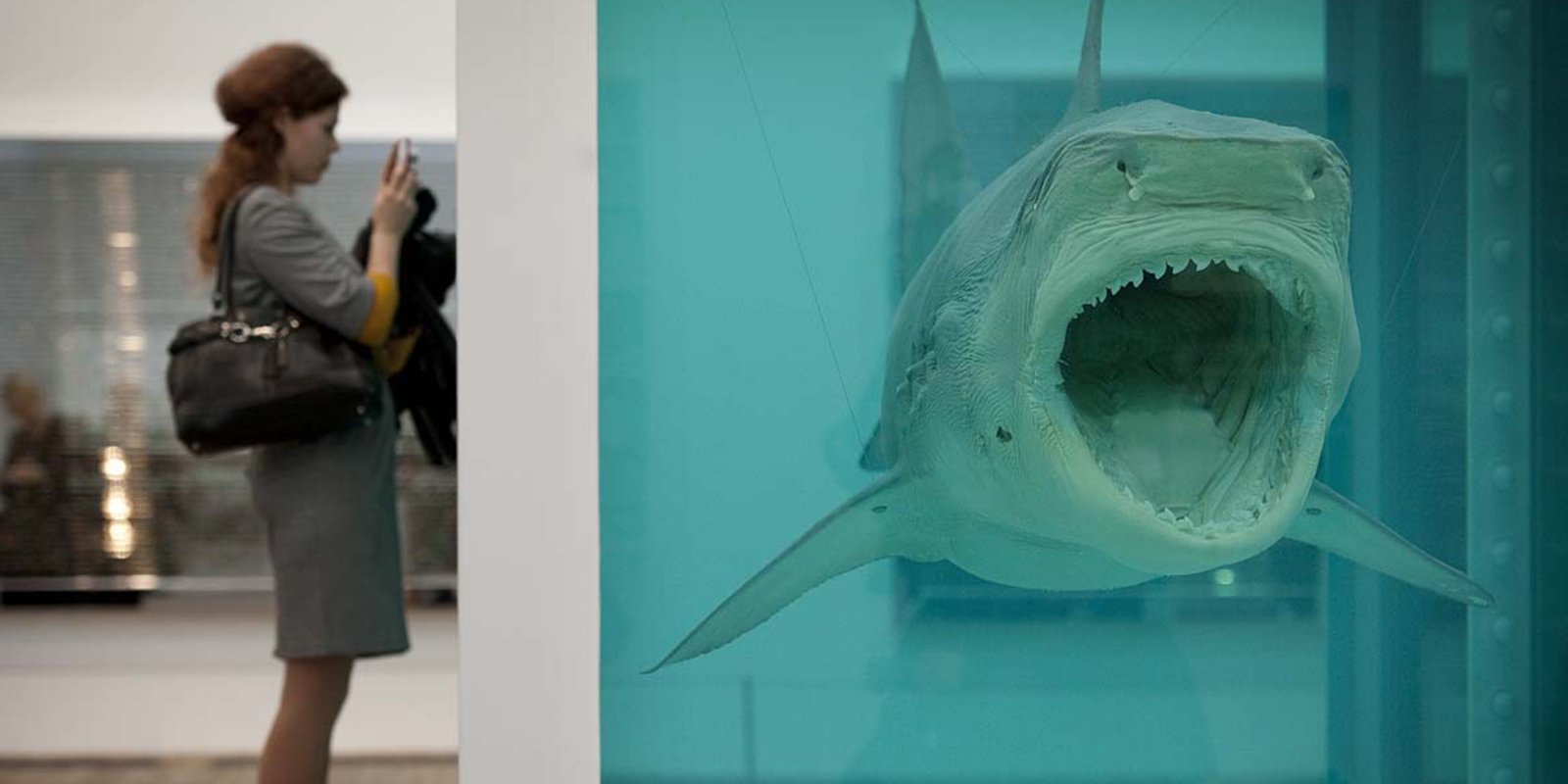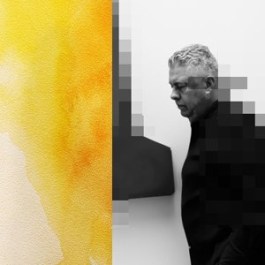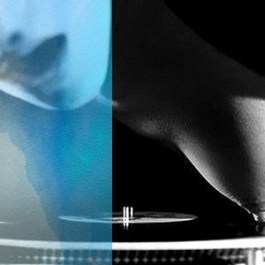Destruction of the Spirit in Art
It all started at the end of the 19th century when the public finally recognized the Impressionists and Post-Impressionists. At that time, the art market quieted down, with the best pieces scattered across museums and private collections, and the 20th century had arrived. Van Gogh had already shot himself, and Cézanne and Gauguin had almost sold out.
Groups of resentful and hungry artists emerged, striving for success and the sweet taste of fame. The slogan "ART SHOULD NOT BE CREATED, BUT INVENTED" entered into their lives and became a symbol of the new art movement.
This gave rise to "contemporary" art, new directions and movements. Demand began to grow, and so did ambition. Dealers picked up the idea of artificial PR, and it became a standard practice.
Many people argue, "I could make something like that, even better." But it's not the painting that makes the artist; it's their publicity. In the art market, PR agencies and galleries decide, "Let's choose this artist and turn them into a genius." They need someone who is neat, knows art history, has certain thoughts, is unmanageable, and may even be rude – someone who fits their criteria.
This one is suitable – drunk, leading a disorderly life, in need of money and recognition. Or this one – they do what no one else has done before... IT WORKS TOO. And the new genius begins to reap dividends.
You may say, have all the talents dried up? Have the searches for new styles in painting come to an end?
Of course not. They existed, exist, and will exist, of one caliber or another. The only thing that has been lost is the profession, the love for the work, the love for art that is capable of sacrifices. More and more people join the global marathon to the trough. An artist says, "There's an exhibition coming up, and I want to paint three paintings for it..." Are paintings like pants? You can sew pants by a certain date, but they're just pants.
Alphonse Allais. Head of the Society of Smoke Puffers.
Alphonse Allais lived in France in the late 19th century and besides being a writer, he had many other duties in his life. In particular, since 1878, Allais held the position of the head of the Society of Smoke Puffers (French: fumisme)..
In 1882, at the Vivien Gallery, at the "Unchained Art" exhibition, he first showed his famous painting - a completely black and almost square canvas called "The Battle of Negroes in a Cave at Night", exhibited in a golden frame by his companion and colleague, the humorist writer Paul Bilhaud. A year later (at the second "Unchained Art" exhibition), Allais exhibited a white sheet of Bristol paper entitled "Anemic Young Girls Going to Their First Communion in the Snow". Another year later, another painting by Allais was perceived as a color explosion. The rectangular landscape "Harvesting of Tomatoes on the Shore of the Red Sea by Cardinals" was a bright red monochromatic painting without the slightest sign of an image.
"A hungry stomach has no ears, but it has a wonderful sense of smell," said Alphonse Allais.
Thus, thirty years before Kazimir Malevich's Suprematist revelations, the artist Alphonse Allais became the author of the first abstract paintings. The white rectangle on a white background and the black square on a black background can also be considered an accurate anticipation of Constructivism and Conceptualism. The only difference between Allais and his followers was that he exhibited his works as a joke and did not try to look like a meaningful philosopher or a serious pioneer. This is precisely what determined the lack of recognition of his contribution to the history of art.
Malevich's Black Square is a vulgar plagiarism from Alphonse Allais presented and promoted as a great work.
A lyrical digression.
At the exhibition dedicated to the 123rd anniversary of Malevich, held in a prestigious Moscow gallery, a doctor of biological sciences, Professor Saveliev (a photographer, a member of the Union of Artists of Russia) hung four abstract photos. The press wrote that his Suprematist compositions with incredible color spots are relevant and continue the line of 21st century art. It turned out that the professor, joking with the public, exhibited, according to him, "photographs of histological sections of the rectum of a dead abstractionist, which are richer than all his lifetime works."
Exercises around the Void
In the first decades of the 20th century, a huge historical period in art came to an end. We witnessed a crisis in the artistic system, and this crisis may last for a long time. Having captured almost the entire twentieth century, this crisis will likely continue throughout the 21st century. But it's hard to accept. That's why it all started: Dadaism, Surrealism, "let's collide the things of the world in absurd combinations" - and something began to hop on grasshopper legs. And further, and further... now Conceptualism, and a shark swam in formalin. But all of this is not it, these are exercises around the void: what can we do to surprise?
Nowadays, any fool can bring whatever they want to an exhibition, even a pile of shit, and place it next to a masterpiece painting - here, see how bold I am. But this is not modern art. You can take a bunch of tubes, squeeze all the paint onto a canvas, and call it a genius work "Ohne Titel No. 16", but the point is that the material should convey some kind of image in art, not become the "art" itself. Every time I clean my big palette table, I'm wiping away my latest "genius work".
The creation of beauty has ended - isn't it noticeable? Anti-art has emerged. Art has transformed into something else. And soon, this product will be given a name.

The destruction of the spirit.
We see how the principle of aesthetics, spirit, and the ideal principle, that is, art as a high example to strive for while recognizing all our human imperfections, is being destroyed. But in the new art, the Spirit is no longer needed. Because art is always a dialogue with the world.
And in the world, both now and in the foreseeable future, only reality remains as a wall, like a pile of bricks, which they show us, saying: this is art. Or they show a preserved shark, but it only evokes disgust, it cannot evoke any other feeling, it does not carry anything sublime, that is, ideal. What is now shown in exhibitions and galleries will pass. Because preserved sharks, sheep, piles of garbage, and spills of paint are not an artistic form. It's a gesture, a statement, but not art.
The impression of plots - the era of reproductions.
The era of reproductions has begun and will last for a long time, the era of indirect contact with a work of art. We even listen to music through headphones, and it's not the same as hearing it live. But reproduction is deficient, it does not even reproduce the size, let alone many other things. People, after watching a television program about an exhibition, say, "Why should we go there, we've seen everything." This is sad because any transmission through the media absolutely does not teach you to see. At best, it allows you to capture the plot and the theme.
Gradually, people will become accustomed to indirect communication with paintings. New generations will increasingly use only copies, not realizing that there is a huge difference between a copy and an authentic work. It depends on everything: on the size, material, style of writing, on the color, which is not transmitted adequately. The brushstroke, glaze, even the darkening, which already enters into the image over time, and so on, are these sensations that are finally lost in the era of reproductions.
The power given by the artist.
It is known that there is a certain radiation of the power given by the artist working on a painting sometimes for many years. This saturation is transmitted only through direct contact. The same goes for music. Listening to music in concert halls and its reproduction even on the newest carrier is incomparable in terms of impact.
To make the content of art accessible to people, one must look at the great paintings - they are bottomless. At each new stage of life, a painting reveals new sides to you.
Circle, sticks, mom, and house.
I cannot predict changes, just as I could not predict the internet. But I know that the need for art will regain strength again - we do not yet know in what form. Why do I hope for this? Because people - you, me, many - continue to draw landscapes, write poetry, even if they are unskillful, but this need exists. A small child always starts drawing his mother - first a circle and sticks, then "mom," then he will draw a house because he lives in it.
And as long as we have two hands, two legs, and thoughts in our heads, the need for art will not disappear. It comes from human nature since the cave times, and it will always be so if we are not completely distorted.
It has already happened when everything seemed to be approaching the final point, but then new people suddenly appeared, and something happened.
Until we see new Leonardos, Manets, Goghs, Picassos, Chagalls, Matisses, Miros and Rauschenbergs walking the streets of Paris, we need not be upset. Humanity has created so much greatness that we have enough with us, by adding great names from museums and galleries to our minds.
And that's what we should hope for.
- Anatoli Gostev
 Contemplation of painting
Contemplation of painting Art inspiration
Art inspiration Jan van Eyck - Gloss
Jan van Eyck - Gloss Ownership of an artwork
Ownership of an artwork

